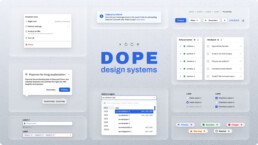At Oracle I led the design and ownership of DevOps Portal, a platform hosting all of Oracle Cloud's critical developer tooling ranging from Operations, CI/CD, Security and Maintenance. I led the design of many 0-1 products and features that were focused on boosting developer efficiency, hyper scalability of cloud and preventing huge monetary losses.
Apart from this I expanded my scope as a PM and Design Ops manager for my team, for various projects where there was no PM support; along with creating intake, review and design critique processes for my team. I played a key role in the design community at Oracle Cloud by facilitating design org meetups and conducting Figma workshops where I taught new features and best practices to all designers.
Here is a sneak peek at some of my work at Oracle.
Get in touch to learn more about my experience building developer tooling in detailed case studies.
01/ Preventing large scale outages
Caused by developer error
Oracle Cloud, like all hyperscale cloud providers, is vulnerable to downtime incidents. A single global outage can cost $10M–$100M per hour and damage market reputation. Some of these incidents stemmed from developer errors slipping past existing checkpoints, posing massive operational and financial risk.
I successfully launched a new product 'Guardrails' as a core developer-safety service within OCI. By proactively preventing developer errors from reaching production, Guardrails has helped Oracle avoid potential multi-million-dollar losses caused due to outages, safeguarded business continuity, and strengthened developer confidence in the deployment process. The number of large scale events decreased by 51% in FY25.
My role and process
I was tasked with addressing this critical risk by designing a completely new service, named Guardrails, to catch and prevent developer errors before they are deployed to different cloud regions, without disrupting existing developer workflows.
Vision & Strategy
I defined the long-term vision and product strategy for Guardrails, framing it as a foundational safety layer in the developer workflow.
Stakeholder Alignment
I partnered closely with the chief architect, engineering leadership, and multiple product teams to align on goals, build buy-in, and prioritize this initiative amidst competing roadmap pressures.
Product Leadership
Drove the 0→1 design effort while expanding my scope as a product manager, creating the roadmap, defining testing and launch milestones, and sequencing phased rollouts to reduce friction in adoption.
Design Execution
Integrated Guardrails into existing deployment tooling with minimal disruption, ensuring it fits naturally into developers’ existing workflows while adhering to compliance and safety standards.
02/ Automating host patching
and ensuring security compliance
At Oracle Cloud, developers had to spend hours manually patching thousands of hosts to keep our infrastructure secure and compliant. It was repetitive, error-prone work that pulled teams away from building features — yet it was essential to protect the cloud from bad actors. I led the design and launched the Automated Host Patching service across OCI. It now saves an estimated $2M every month in developer time while strengthening Oracle Cloud’s security posture and giving engineers time back to focus on higher-impact work.
My role and process
I led the 0→1 design effort from ground up.
Vision and Strategy
I set the vision for an automated patching service that would quietly handle this recurring task and remove the manual burden from developers. I worked with the engineering leads to build an implementation plan, ensuring we could launch on schedule while staying true to what customers actually needed.
Customer Insight & Scope Alignment
I conducted research with service teams to understand their workflows, and used those insights to persuade the product team to cut overly complex scenarios that weren’t customer priorities and would have delayed us.
Design Execution
I designed the experience end to end, drawing on my deep familiarity with the DevOps portal and developer workflows. I focused on making the solution intuitive, operationally clear, and simple to adopt, while aligning it seamlessly with existing tools.
03/ DOPE design systems
UI Kit, guidelines & templates
While the DOPE design systems used for DevOps Portal was based on an open source design system, it was heavily customized for specific scenarios, used a lot of custom components and was not available on Figma.
My role
I created the UI Kit for DOPE design systems with my team in Figma, and formulated the guidelines on how to utilize it.
I worked with the developer team to build reusable templates that product teams could use to quickly build their applications for Devops portal with minimal design support, saving both developer and designer time.
